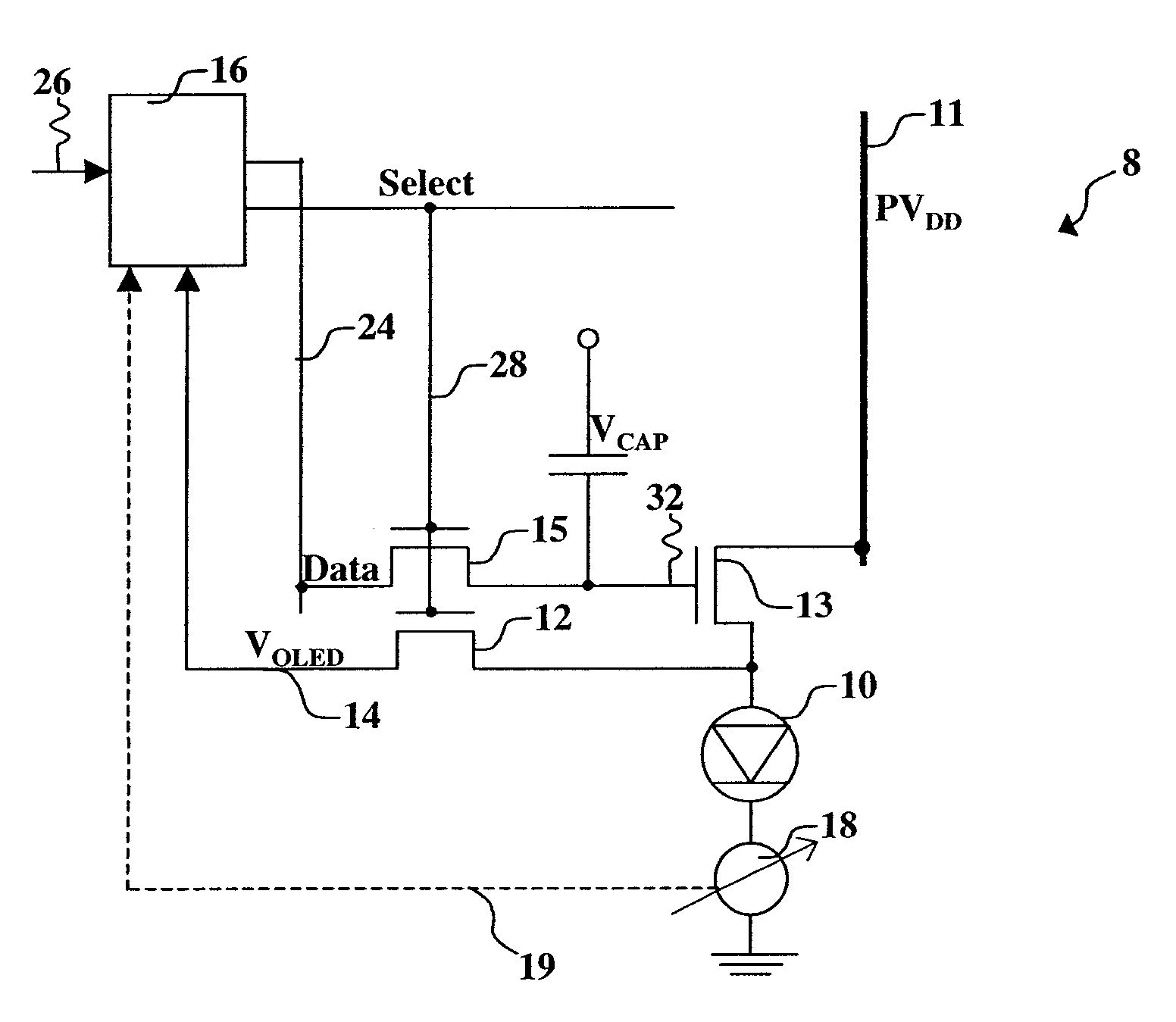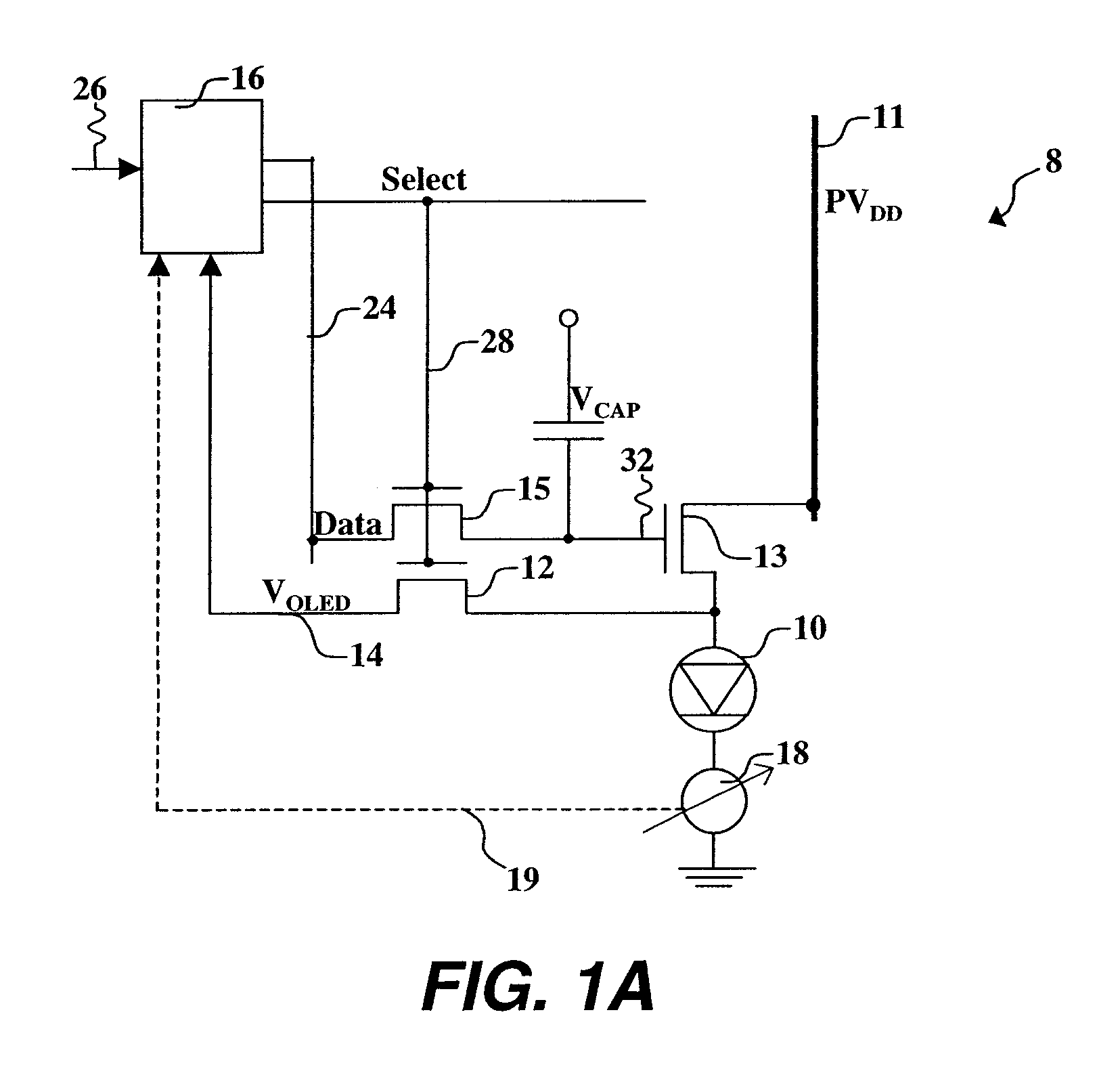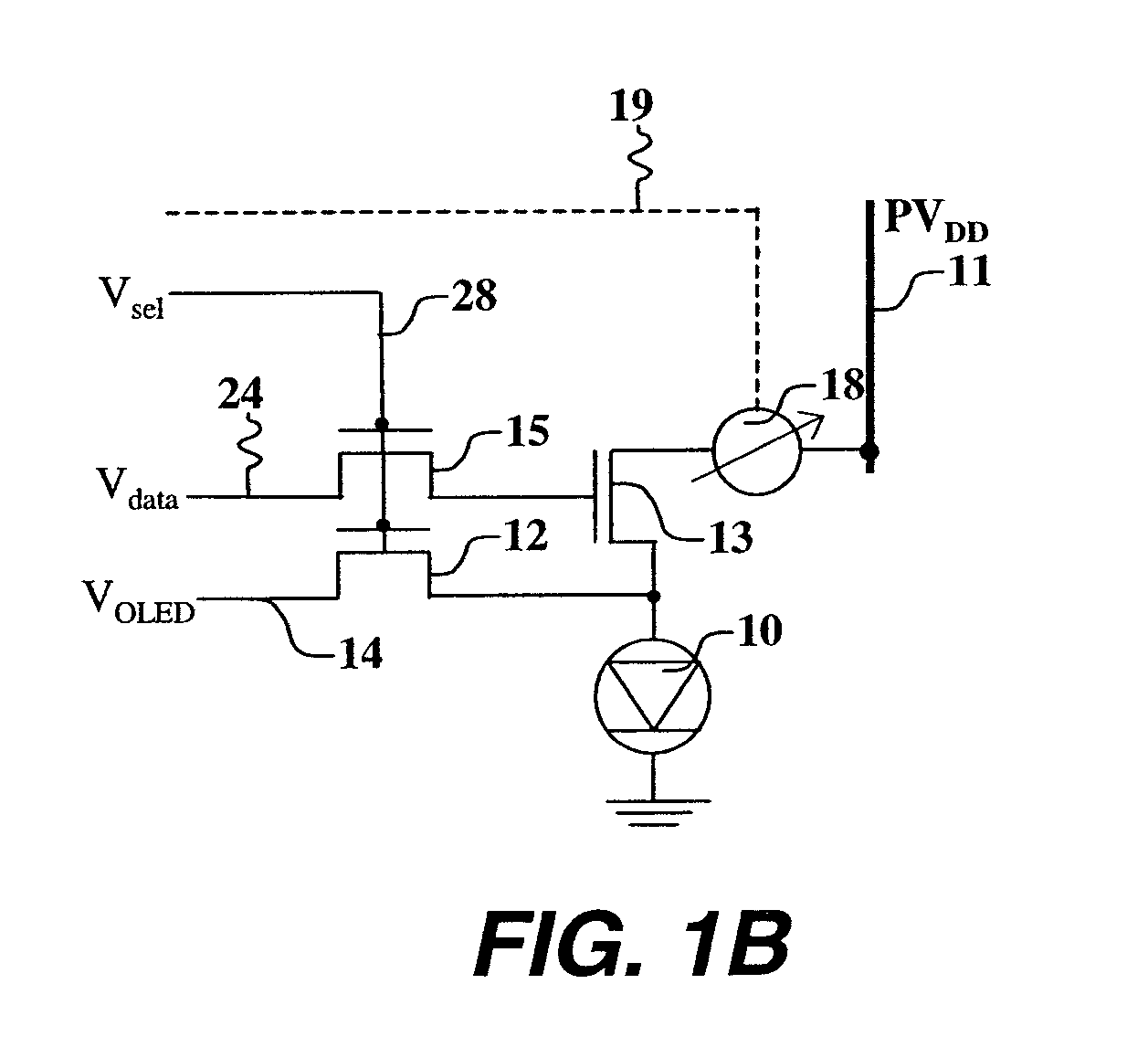OLED display with aging and efficiency compensation
a flat-panel display and efficiency compensation technology, applied in the field of solid-state oled flat-panel displays, can solve the problems of reducing the lifetime of the display, differential color aging, and aging of organic materials in the display, and achieve the effect of simple voltage and current measurement circuitry
- Summary
- Abstract
- Description
- Claims
- Application Information
AI Technical Summary
Benefits of technology
Problems solved by technology
Method used
Image
Examples
Embodiment Construction
[0027]Turning now to FIG. 1A, there is shown a schematic diagram of one embodiment of a compensated drive circuit 8 adjusting for changes in the threshold voltage of a drive transistor and aging of an OLED device according to the present invention. Drive circuit 8 includes OLED device 10, drive transistor 13, a data line 24 that carries analog data (e.g. voltage) representative of the brightness level desired from OLED device 10, switch transistor 15, and a select line 28. An OLED display can comprise an array of drive circuits 8. Drive transistor 13 is connected to power supply 11 (PVDD) and to OLED device 10. Drive transistor 13 is an amorphous silicon transistor or other transistor whose properties change with time and / or use. When select line 28 is activated, switch transistor 15 is activated and a voltage from data line 24 is applied to gate electrode 32 of drive transistor 13 so that current proportional to the applied data line voltage will flow through the drain and source e...
PUM
 Login to View More
Login to View More Abstract
Description
Claims
Application Information
 Login to View More
Login to View More - R&D
- Intellectual Property
- Life Sciences
- Materials
- Tech Scout
- Unparalleled Data Quality
- Higher Quality Content
- 60% Fewer Hallucinations
Browse by: Latest US Patents, China's latest patents, Technical Efficacy Thesaurus, Application Domain, Technology Topic, Popular Technical Reports.
© 2025 PatSnap. All rights reserved.Legal|Privacy policy|Modern Slavery Act Transparency Statement|Sitemap|About US| Contact US: help@patsnap.com



